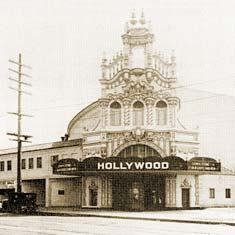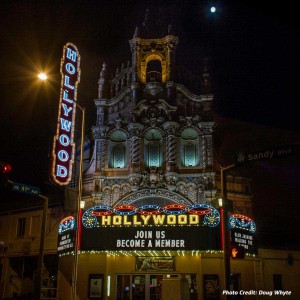 The Community Planning Workshop (CPW) is embarking on a dramatic journey, the Oregon Historic Theatres Inventory Project. CPW will explore these incredible cultural gems, once cornerstones of social and economic life, to understand their continued value as community assets. The project will include a statewide inventory and assessment to develop strategies tying historic theatres to travel and tourism promotion throughout Oregon.
The Community Planning Workshop (CPW) is embarking on a dramatic journey, the Oregon Historic Theatres Inventory Project. CPW will explore these incredible cultural gems, once cornerstones of social and economic life, to understand their continued value as community assets. The project will include a statewide inventory and assessment to develop strategies tying historic theatres to travel and tourism promotion throughout Oregon.
About the Project
As a three-phase exploration of Oregon’s historic theatres and their potential to spur economic development, Aniko Drlik-Muehleck, Project Manager and CSC GTF, has begun the tedious task of Phase One; taking inventory and gathering information on theatres from across the state that qualify as historic. Currently, she has already identified over 70 theatres in almost 50 Oregon cities.
For Phase Two, beginning in January 2015, a CPW student team led by Aniko and Robert Parker, CPW Program Director and Project Advisor, will gather important data with a needs assessment survey. The student team will send surveys to historic theatres identified during Phase One asking owners and operators to explain their business model and describe theatre needs related to building rehabilitation and maintenance, equipment upgrades, programming, and marketing.
In spring and summer 2015, CPW will partner with theatre owners, operators, and regional tourism agencies to explore viable marketing strategies. This will link Oregon historic theatres to travel and tourism promotion in Phase Three of the project.
Oregon’s historic theatre inventory project comes at a particularly critical period for downtown theatres. “There is nothing quite like the incandescent lights coming on as daylight fades,” said Aniko. Acting as community facilities and gathering places, historic theatres draw residents and visitors to be educated, informed and entertained with a variety of programming. Yet they struggle to keep up with the costs of keeping the doors open.
The rising cost of theatre maintenance and operations has dealt some hefty financial blows, prompting the closure of many historic theatres. Movie theatres, for example, face $50,000 minimum to upgrade to digital projection systems. In a town with less than 3000 people, the possibility of a theatre affording such an investment is low.
Fortunately for the City of Burns (population 2,835), the “Save the Desert Historic Theatre” campaign mobilized over $55,000 for the installation of a new digital projector in five months. Regular films are now featured for the enthusiastic residents of Harney County. In posts following the successful fundraising effort, residents commented, “There’s nowhere like HARNEY County…so proud to be part of this community!!” CPW’s student team and staff hopes to build on the energy of grassroots movements like this across the state.
Together with project partners, Oregon Main Street, Pacific Power, and Travel Oregon, CPW will explore the possibilities of revitalizing Oregon’s historic theatres. What does this look like in a small community? Are there more theatre fundraisers in the works? How many façades, like the Hollywood Theatre’s (pictured here), are waiting to be restored? Is there a long line of theatre enthusiasts eagerly waiting to experience Oregon’s historic theaters? CPW intends to discover this and more.
Want to Help?
CPW would love your input! While many historic theatres have been identified, CPW has a feeling there are quite a few more to be discovered we don’t know about. Visit the historic theatre’s website to view the map of inventoried theatre locations, and to please fill out the inventory form if there seems to be one that is missing.
Related Story: Travel Oregon Awards $120,000 for Local Tourism Development
 About the Author: Aniko Drlik-Muehleck, originally from Berkeley, CA, is now a Master of Community and Regional Planning candidate at the University of Oregon and participated in the Community Service Center’s RARE AmeriCorps Program – Resource Assistance for Rural Environments with the City of Pendleton from 2012-2013.
About the Author: Aniko Drlik-Muehleck, originally from Berkeley, CA, is now a Master of Community and Regional Planning candidate at the University of Oregon and participated in the Community Service Center’s RARE AmeriCorps Program – Resource Assistance for Rural Environments with the City of Pendleton from 2012-2013.

